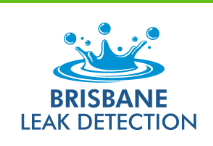Teaching children with special needs requires a tailored approach that recognizes and accommodates their unique learning requirements. Every child is different, and effective strategies can make a significant difference in their educational journey. In this article, we will explore some of the most effective strategies for teaching Educating the retarded child to help them reach their full potential.
1. Individualized Education Plans (IEPs)
Individualized Education Plans (IEPs) are essential tools for guiding the education of children with special needs. These personalized plans outline the child’s specific learning objectives, accommodations, and the necessary support services. They ensure that the child’s education is tailored to their unique strengths and challenges.
2. Differentiated Instruction
Differentiated instruction involves adjusting teaching methods and materials to meet the diverse needs of students. Teachers can modify content, process, and product to cater to individual learning styles and abilities. This approach ensures that each child receives instruction at their level of understanding.
3. Small Group Instruction
Small group instruction allows for more personalized attention and support. Children with special needs often benefit from a smaller teacher-to-student ratio, enabling educators to address individual concerns and adapt teaching methods accordingly.
4. Visual Aids
Visual aids, such as charts, diagrams, and images, are powerful tools for enhancing the understanding of children with special needs. Visual cues can help them grasp abstract concepts and reinforce learning.
5. Sensory Integration
Many children with special needs may have sensory processing challenges. Sensory integration strategies, such as sensory breaks or sensory-friendly classrooms, can help create a more comfortable and productive learning environment.
6. Assistive Technology
Assistive technology, including speech-to-text software, communication devices, and adaptive software, can be invaluable for children with special needs. These tools can help bridge communication gaps and support their educational progress.
7. Multi-Sensory Learning
Engaging multiple senses in the learning process can enhance comprehension. Activities that involve touch, sight, hearing, and movement can be particularly effective for children with special needs.
8. Positive Behavior Support
Positive behavior support strategies focus on reinforcing desired behaviors and teaching self-regulation skills. By encouraging and rewarding positive behavior, teachers can create a more productive and inclusive classroom environment.
9. Peer Buddies and Inclusion
Incorporating peer buddies or promoting inclusion within the classroom can have a positive impact. Peer buddies provide social support and model appropriate behavior, while inclusion allows children with special needs to interact with their typically developing peers.
10. Regular Progress Monitoring
Frequent progress monitoring is crucial for assessing the effectiveness of teaching strategies. By regularly evaluating a child’s development, teachers can make necessary adjustments to their approach.
11. Communication with Parents
Collaboration with parents is essential for the success of children with special needs. Teachers should maintain open and effective communication with parents to share insights, concerns, and updates on their child’s progress.
12. Patience and Flexibility
Teaching children with special needs requires patience and flexibility. Teachers must be adaptable and willing to modify strategies as the child’s needs change. A patient and empathetic approach can build trust and confidence.
13. Social and Emotional Learning
Social and emotional learning programs help children with special needs develop essential life skills, such as self-awareness, self-regulation, and effective communication. These skills are critical for their long-term success.
14. Specialized Training for Teachers
Professional development and specialized training for teachers in the field of special education are essential. Teachers should continually update their knowledge and skills to ensure they can provide the best possible support to their students.
In conclusion, effective strategies for teaching children with special needs are diverse and adaptable. The key is recognizing the unique learning requirements of each child and tailoring educational approaches to accommodate those needs. With the right strategies, children with special needs can achieve their full potential and make meaningful progress in their educational journey. By fostering a supportive and inclusive environment, teachers can help these children thrive academically and personally.
https://bizpostnews.com/building-positive-relationship-with-special-needs-and-their-families/



